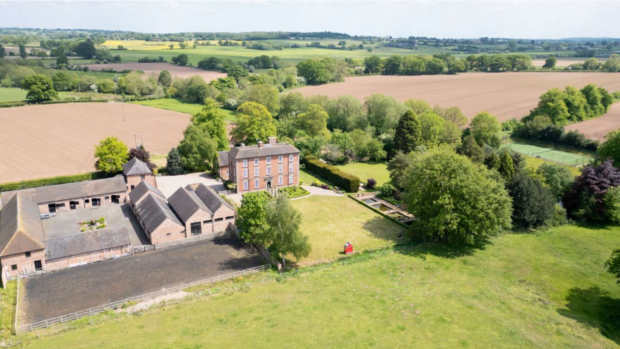Forget racing and its multimillion prizes. When it comes to property, “the wealthiest buyers are show jumpers,” says Diana Rowell of Churchill Country & Equestrian. “Nothing is skimped on.”
So what makes the perfect home for the richest among riders? Good transport links, according to Zoe Napier of Walkers Country & Equestrian. “Buyers with keen show jumping interests seem less concerned about the location of a property in respect of good bridleways, and more concerned about their intended purchase for good roads,” she says.
Rider Tim Stockdale (pictured), however, begs to differ. “Location is not so important so long as it isn’t somewhere really remote,” he says. “Somewhere in Cornwall or the Outer Hebrides may not be very good for a show jumper. But with our motorways you can be almost anywhere in 3hr — for some of our counterparts on the continent, 3hr would be a local show.”
Adequate facilities to exercise his horses properly are the top priority for Stockdale, who thinks that his Northamptonshire home has the perfect set-up for a professional show jumper.
“We have good, secure stables, a wash room, tack room and a good training area with an all-weather school, a jumping paddock and an indoor school,” he says.
Indoor and covered arenas are difficult to find, so most mere mortals will probably have to settle for an all-weather manège, although buyers with the show jumping bug should look for wide arenas.
“Show jumpers require different-sized manèges to the standard 60x20m,” says Napier. “A squarer school, such as 40x30m, is far more suitable.”
Stockdale thinks that size matters when it comes to outdoor schools, and that buyers are better to err on the big side.
“If you build an arena where a horse isn’t restricted in landing, you can work him properly. I’d say that you need a minimum of 25m by at least 50m.”
In Stockdale’s view, a dream show jumping home would also have a “good grass jumping paddock. But,” he adds, “the English weather is what it is. I’d say that a good-sized outdoor all-weather arena has got to be the best thing from a practicality point of view. The all-weather has got to be there first, then a good, well-planned jumping paddock. An indoor school is a luxury.”
Former semi-professional show jumper Hayley Brown, of East Anglia Equestrian Properties, believes horsewalkers are invaluable for riders who need their horses to stay fit.
“A show jumping professional will put horses on a horsewalker, then ride them, do their schooling and use the walker to cool them off after work,” she points out.
Quality stables are also extremely important.
“Internal arrangement of stabling is now more and more popular for practical horse management, with clipping, shoeing and washdown areas and all-weather turnout areas. They need a dust-free, well-ventilated, well-lit, compact yard,” says Rowell, who thinks that “large parking for huge boxes” and grooms’ quarters are also a must.
Land, by contrast, doesn’t come at the top of the show jumping wish list.
“We don’t turn out our horses a huge amount,” says Stockdale, who has 25 acres. “Small turnout paddocks are becoming more popular — I’d say four of these would be fine.”
Find your ideal equestrian property with our online database >>
|
||
 |
||

 Get up to 19 issues FREE
Get up to 19 issues FREE TO SUBSCRIBE
TO SUBSCRIBE 


